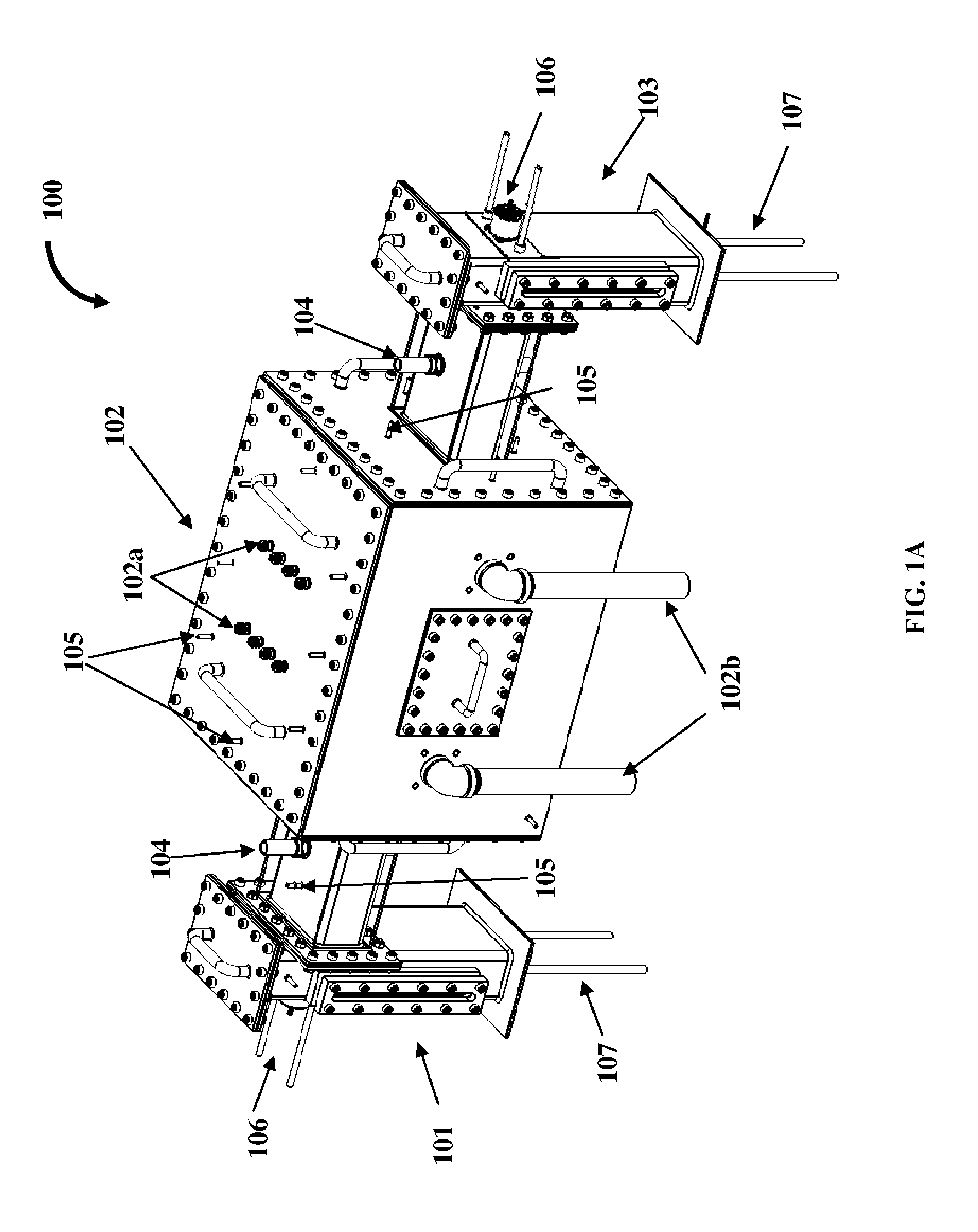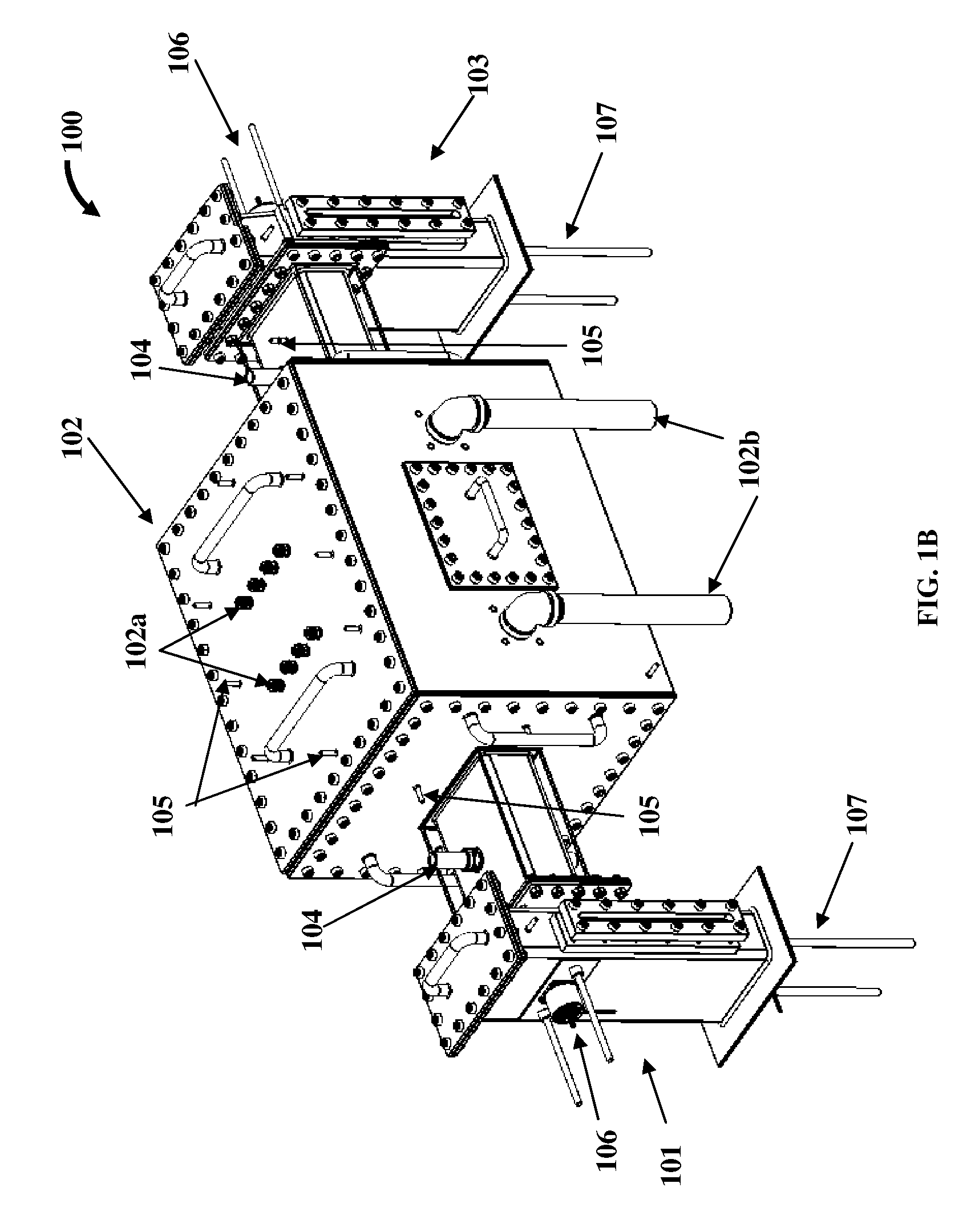Continuous manufacture of carbide derived carbons
a technology continuous production, which is applied in the field of system for manufacturing porous carbon, can solve the problems of limiting the amount of material which can be processed, corroding the halogen(s) at elevated temperatures with respect to the material of processing equipment, and limiting the output of carbide derived carbon material, so as to reduce the cost of making porous carbon
- Summary
- Abstract
- Description
- Claims
- Application Information
AI Technical Summary
Benefits of technology
Problems solved by technology
Method used
Image
Examples
example 1
[0065]This example relates to a single-step process. In this case, the feed is processed in one direction only under a single set of conditions. In an embodiment, empty trays and sample trays 205 filled and accurately weighed with a carbide material are loaded into the sample tray zone A. The empty trays, located both before and after the filled sample trays 205, are required to completely move or push the sample trays 205 with the material through the reactor 201 to the opposite sample tray zone A. The sample trays 205 are positioned such that the first sample tray 205 with the material is located in the pre-heating / de-gassing zone C. Prior to and during heating of the reactor 201, an inert gas such as argon is passed through the reactor 201. At all times, the reactor apparatus 100 is purged with an inert gas, for example, argon. The reactor 201 is heated to a predetermined temperature and is allowed to stabilize. A process or reactant gas is then introduced into the reaction / proce...
example 2
[0066]This example relates to a multi-step process. In this case, materials undergo processing in one direction at certain conditions, followed by processing in the opposite direction under different conditions, without removing the materials. In the multi-step process, there is no limit to the number of process steps. In an embodiment, empty trays and sample trays 205 filled and accurately weighed with a carbide material are loaded into the sample tray zone A. The empty trays, located both before and after the filled sample trays 205, are required to completely move or push the sample trays 205 with the material through the reactor 201 to the opposite sample tray zone A. The sample trays 205 are positioned such that the first sample tray 205 with the material is located in the pre-heating / de-gassing zone C. Prior to and during heating of the reactor 201, an inert gas such as argon is passed through the reactor 201. At all times, the reactor apparatus 100 is purged with an inert gas...
PUM
| Property | Measurement | Unit |
|---|---|---|
| depth of field | aaaaa | aaaaa |
| temperatures | aaaaa | aaaaa |
| surface characteristics | aaaaa | aaaaa |
Abstract
Description
Claims
Application Information
 Login to View More
Login to View More - R&D
- Intellectual Property
- Life Sciences
- Materials
- Tech Scout
- Unparalleled Data Quality
- Higher Quality Content
- 60% Fewer Hallucinations
Browse by: Latest US Patents, China's latest patents, Technical Efficacy Thesaurus, Application Domain, Technology Topic, Popular Technical Reports.
© 2025 PatSnap. All rights reserved.Legal|Privacy policy|Modern Slavery Act Transparency Statement|Sitemap|About US| Contact US: help@patsnap.com



